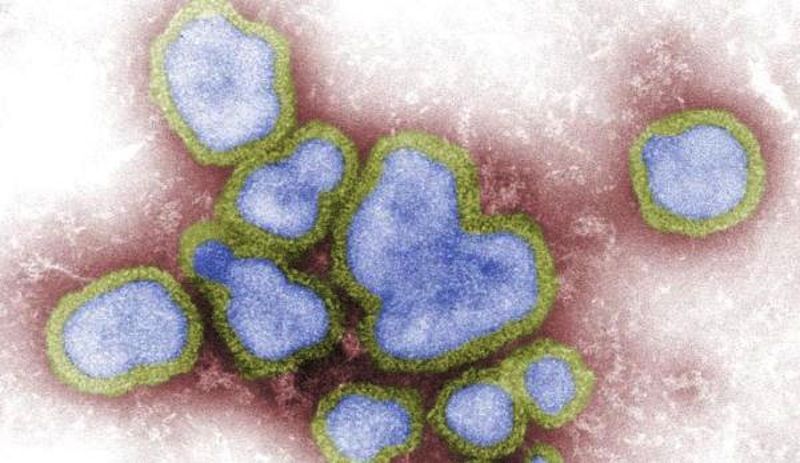Flu Shot 2013-2014: Strains, Release Date & Side Effects

For years, flu vaccines in the United States have been designed to protect against three strains of flu. But during the 2013 to 2014 flu season, a vaccine that protects against four strains will be offered for the first time.
Because flu strains circulating around the world are constantly changing, a new flu vaccine is made every year.
Scientists make the vaccine before flu season starts by predicting which flu strains are likely to be the most common during the upcoming season.
What's in the 2013-2014 flu vaccine?
During the 2013-2014 season, a three-component flu vaccine (which protects against three strains) and a four-component flu vaccine (which protects against four strains) will be available, according to the Centers for Disease Control and Prevention.
The three-component (trivalent) flu vaccine is made from three flu strains: two influenza A strains, H1N1 and H3N2, and an influenza B strain.
The four-component (quadrivalent) flu vaccine will contain these three strains, as well as a second influenza B strain.
About 135 million to 139 million doses of flu vaccine are projected to be available during the 2013 to 2014 flu season, about 30 million of which will be quadrivalent flu vaccine, the CDC says.
Who needs a flu shot and when is it available?
The CDC recommends a yearly flu shot for all Americans ages 6 months and older.
Exactly when flu season starts and ends is unpredictable, so health officials recommend that people get their flu shot in early fall, before activity starts to rise. Flu activity typically peaks in January or February.
The 2013-2014 flu vaccine is available starting this fall. Some flu vaccine manufacturers began shipping this year's vaccine to health care providers last month. People can visit the CDC's HealthMap Vaccine Finder to find flu shot locations, although they should call the location ahead of time to see if they have the vaccine in stock.
(function() { var id = "hgplayer-holder-" + Math.floor(Math.random()*9000), hgs = document.createElement('script'); document.write('<div id="'+id+'" ></div>'); hgs.type = 'text/javascript'; hgs.async = true; hgs.src = 'http://p.hgcdn.net?placement_id=40941&t=P4tN&appendTo='+encodeURIComponent('#'+id)+'&url='+encodeURIComponent(location.href) ; var s = document.getElementsByTagName('script')[0]; s.parentNode.insertBefore(hgs, s); })();
How effective is the vaccine?
The effectiveness of the yearly flu vaccine depends upon several factors, including how well the flu strains in the vaccine match the strains in circulation. Some studies show that when strains in the vaccine are a good match with the ones that are circulating vaccinated individuals are 50 to 60 percent less likely to catch the flu than people who aren't vaccinated.
Last year's flu vaccine (for the 2012-2013 flu season) was moderately effective at protecting against the flu. Among all age groups, the vaccine was 56 percent effective, meaning it reduced the risk of a doctor's visit for flu by 56 percent.
Health officials don't know how effective this year's vaccine will be right now, but they will monitor the vaccine effectiveness over the course of the season.
While the flu vaccine is not perfect, it is the best way to protect yourself from the flu, the CDC says. Even if the vaccine is not an ideal match for the viruses in circulation, it can still provide some protection against tithe flu.
Other ways to protect yourself and others from the flu include: staying away from those who are sick with the flu, washing hands to reduce the spread of germs, and staying home from work or school if you have the flu, the CDC says.
What are the side effects?
According to the CDC, mild side effects from the flu shot include: soreness, redness or swelling at the injection site, low grade fever, and aches. Because the viruses in the flu shot are killed, people cannot get the flu from a flu vaccine. Rare but serious side effects can occur, including allergic reactions. Symptoms of serious side effects include: difficulty breathing, swelling around the eyes or lips, hives, racing heart, dizziness and high fever. If you experience serious side effects, you should seek medical care immediately, the CDC says.
For children, side effects from the flu nasal spray can include: runny nose, wheezing, headache, vomiting, muscle aches and fever. For adults, side effects include: runny nose, headache, sore throat and cough.
You should not get the flu vaccine if you have a fever (You should wait until the fever is gone.)
Follow Rachael Rettner @RachaelRettner. Follow LiveScience @livescience, Facebook & Google+.
Sign up for the Live Science daily newsletter now
Get the world’s most fascinating discoveries delivered straight to your inbox.

Rachael is a Live Science contributor, and was a former channel editor and senior writer for Live Science between 2010 and 2022. She has a master's degree in journalism from New York University's Science, Health and Environmental Reporting Program. She also holds a B.S. in molecular biology and an M.S. in biology from the University of California, San Diego. Her work has appeared in Scienceline, The Washington Post and Scientific American.












